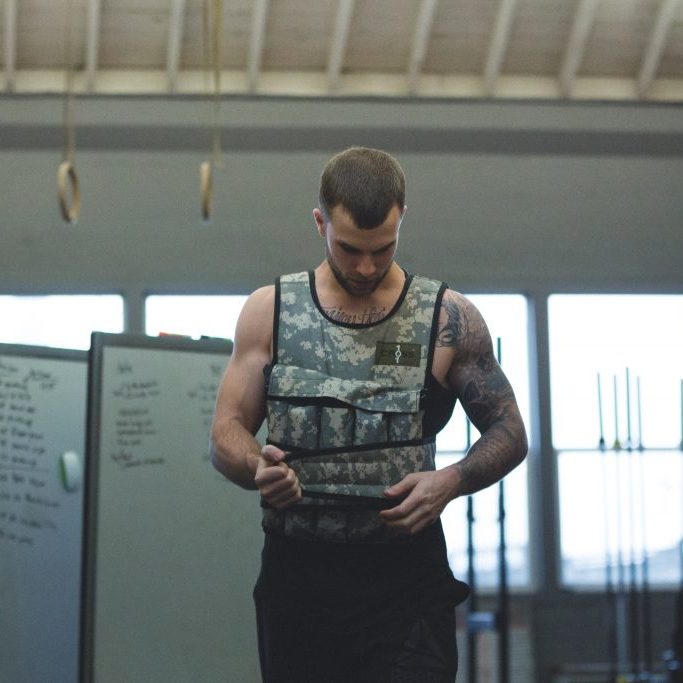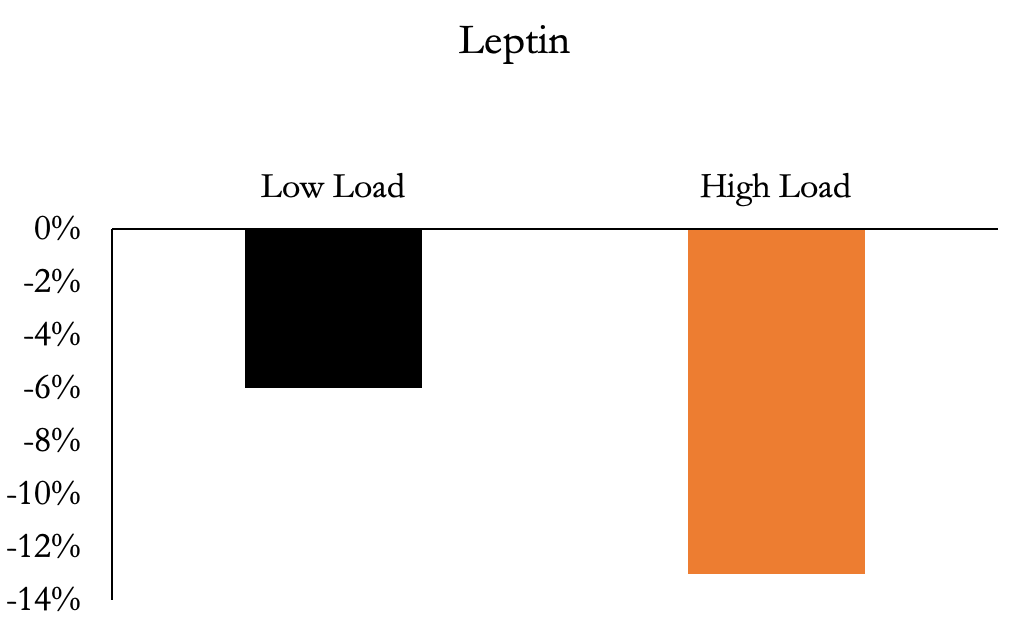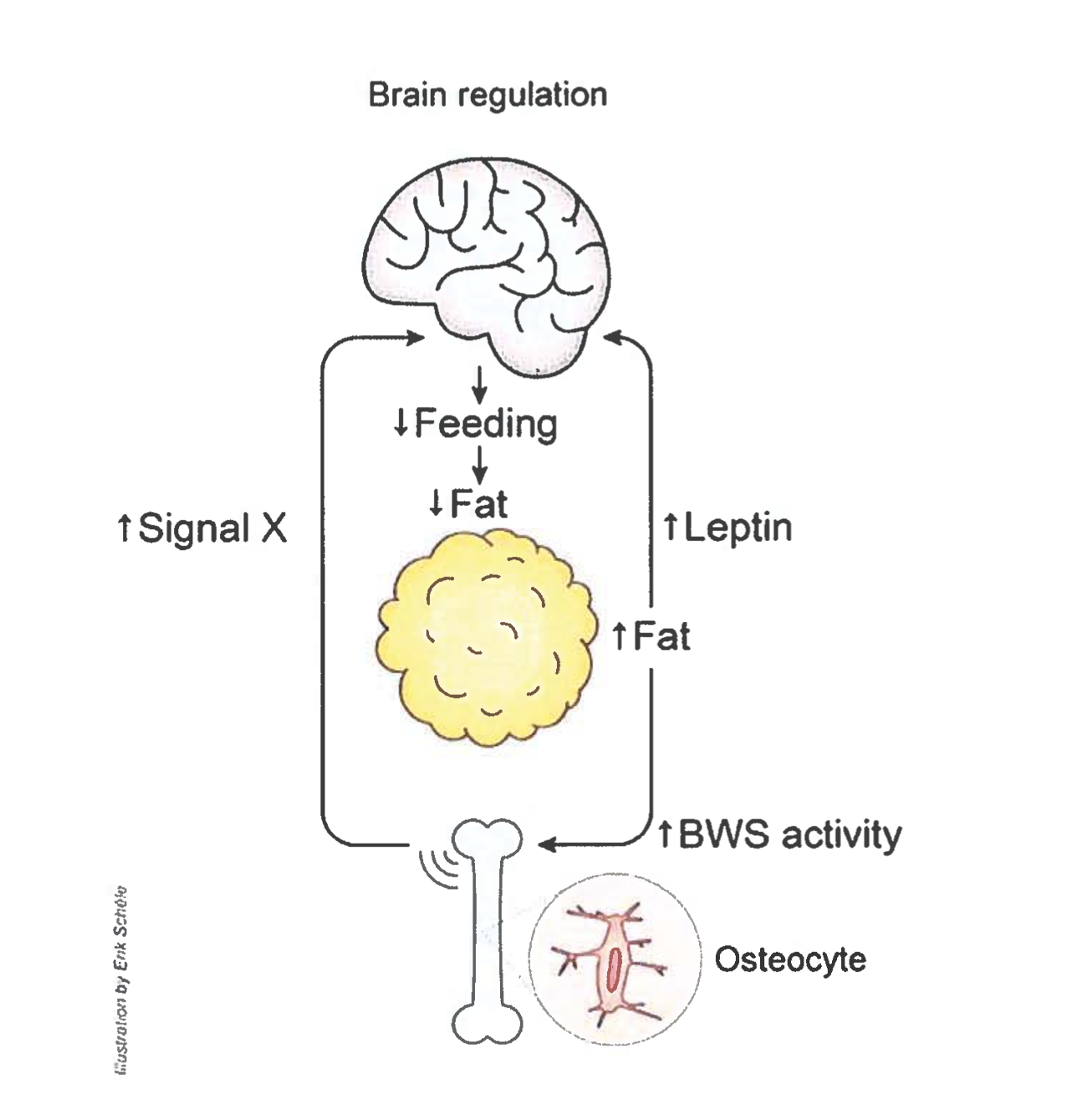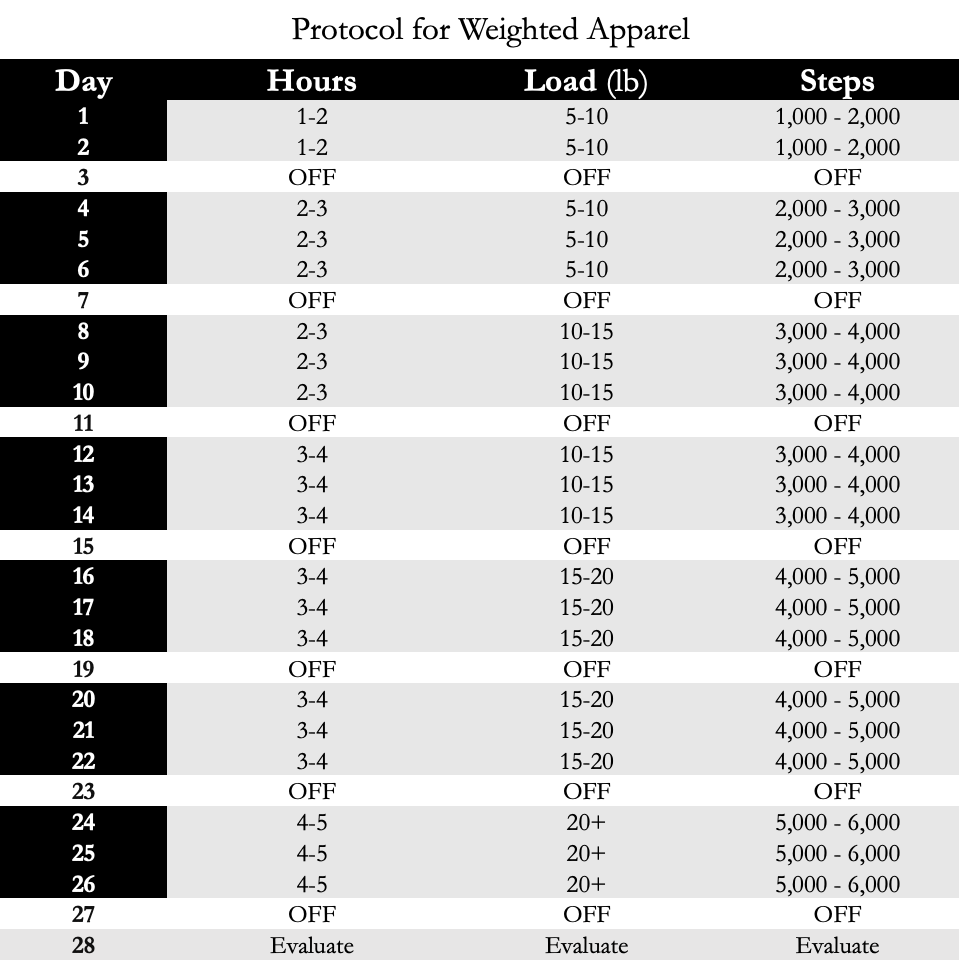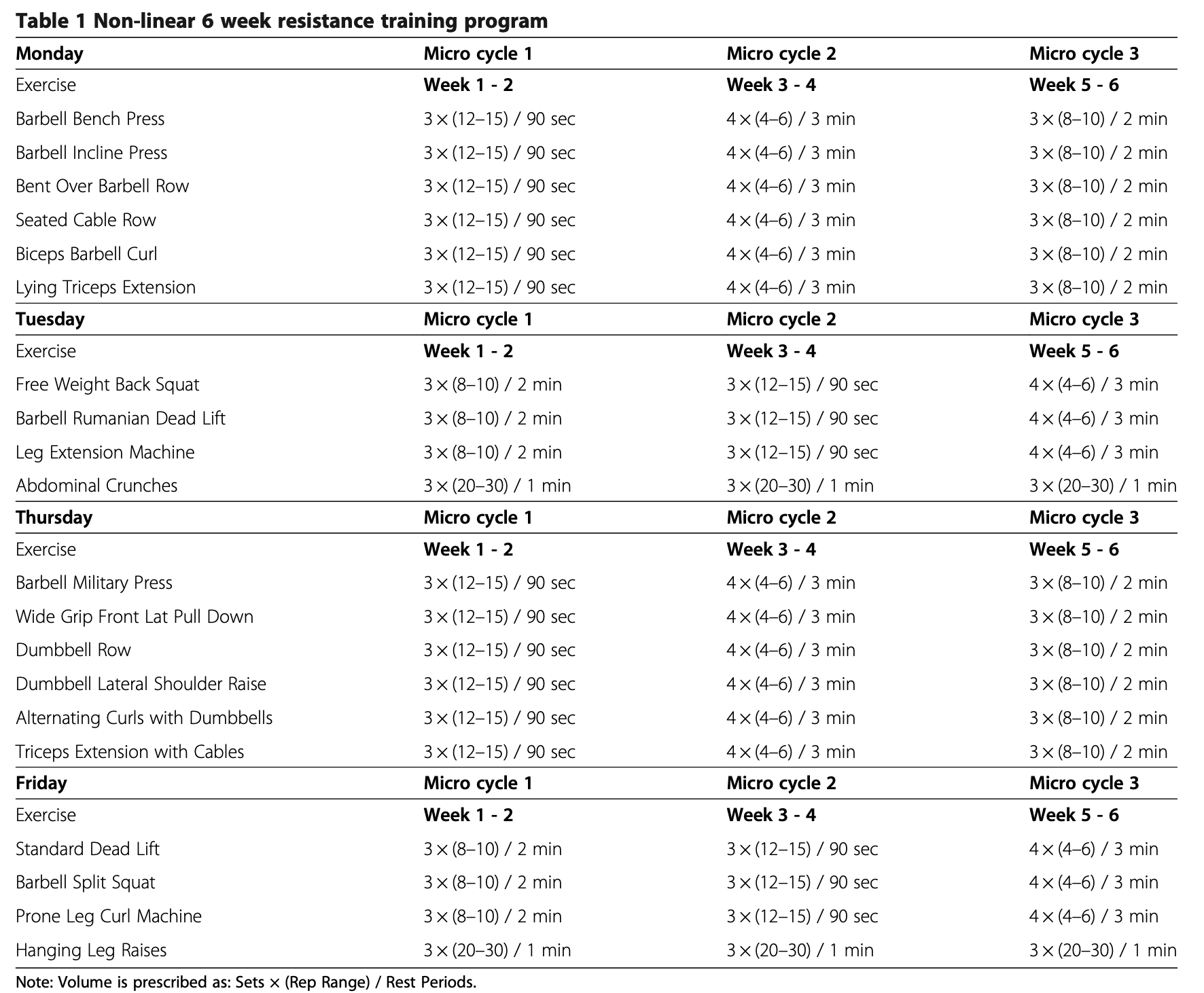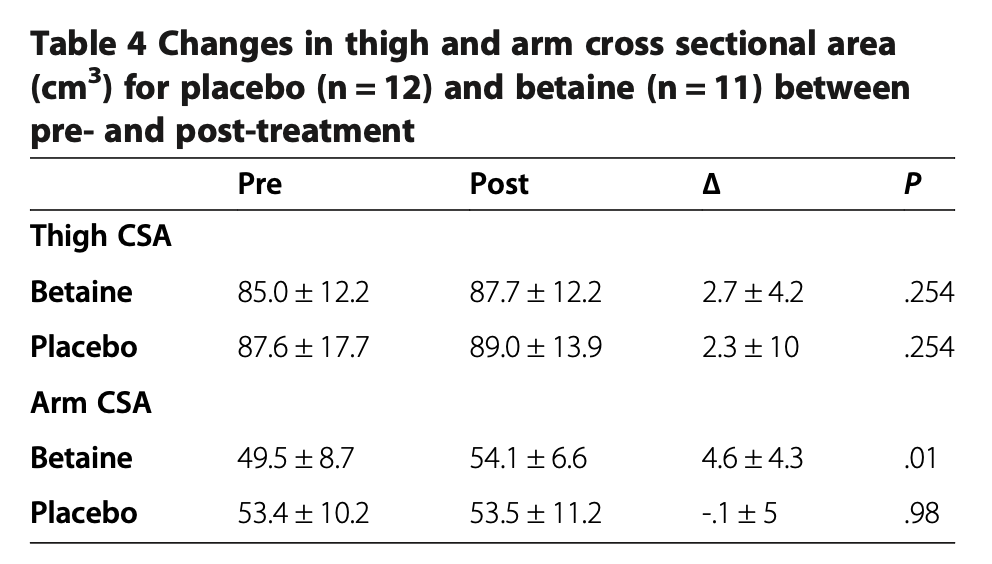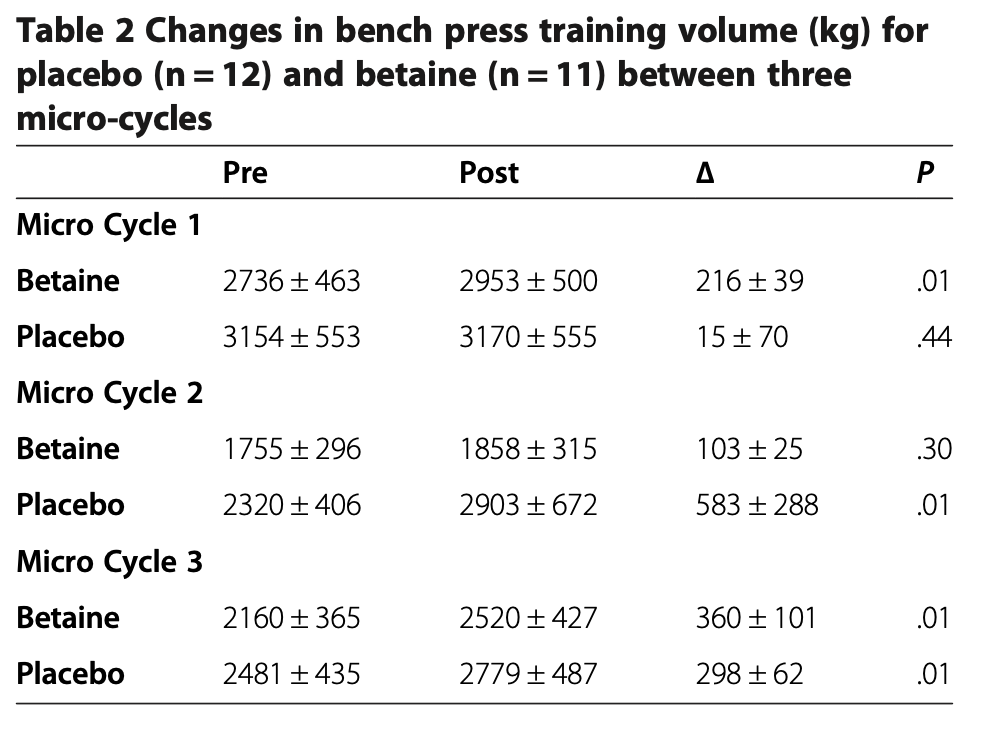Each month I will cover a few of the top research articles on nutrition, training, sleep, supplements, and anything else that might help you. If you’d like me to cover a specific study next month send me a message on Instagram.
Study #1
Big Question: Can weighted vests help you lose fat?
Scientific Question: Does artificially increased weight decrease biological body weight?
Who
Healthy men and women with obesity who were age 18-70 years of age.
Table 1. Demographics
| Low Load
(n = 37) |
High Load
(n = 35) |
|
| Age | 48.5 | 50.4 |
| Weight (lb) | 205.0 | 210.1 |
| Body fat (%) | 38.3 | 36.3 |
| Height | 5’6 | 5’7 |
Study Details
Participants were randomized to heavy or light bodyweight loading for three weeks. The heavy vest was 11% of the subject’s body weight and the light vest was 1% of body weight. Let’s put those numbers into perspective. On average, the high load group wore a vest weighing ~23lbs and the low load group wore a vest weighing ~2lbs.
The participants were asked to use the weighted vest for at least eight hours per day for three weeks.
The primary outcome was the relative change in body weight. The primary outcome is a variable that is most relevant to answer the research question. Here they chose relative body weight and not fat mass, which is odd considering those who want to lose weight mainly want to lose fat.
Results
The average hours of vest exposure or the percent standing time during the vest exposure were not different between the two groups. The average vest exposure was 9 hours per day for the light vest (57% standing) and 8.4 hours per day for the heavy vest (64% standing). The standard deviations were high, which means there was a lot of variation within groups (see Table 1 in manuscript).
The body weight loss was significant in the high load group (-1.68%) but not in the low load group (+0.31%). You can see the absolute change in the graph below. The primary outcome of body weight change was more for the high load than the low load group. That isn’t very surprising since the vest weighed a lot more.
Figure 1. Absolute Change from baseline for body weight, fat mass, and fat free mass.
Leptin is a hormone produced primarily by fat tissue and plays an important role in weight regulation. More fat mass generally means more leptin. The importance of leptin stems from the finding that a genetically caused lack of leptin (in mice) results in severe obesity that can then be reversed by leptin treatment.
Before the start of the study, there were no significant differences between groups except for leptin. That’s good. However, the high load group had less leptin at baseline.
Figure 2. Change from baseline for leptin
The serum levels of leptin are very high in obese people, but high leptin has not prevented the development of obesity in humans. In physique athletes leptin drops substantially during prep and increases when athletes recover fat mass. In this study, there were no differences between groups for leptin changes. However, when we look within the groups there was a moderate reduction in leptin for the high load group (-13%), but not the low load group (-6%) (Figure 2). Since this is a secondary outcome, it’s ok that there was no difference between the groups because the study was not powered to detect it. This result doesn’t affect the main findings of the study. If you want to learn more about within and between-group differences watch this video.
The proportion of participants reporting an adverse event was higher in the high load group (37.1%) compared with the low load group (16.2%). The were mostly due to muscle soreness, swollen ankles, and general discomfort from wearing a vest. Since we know standing percentage and time wearing the vest was not different between groups, it was the weight difference of the vests that caused these issues.
Author’s Answer
The main finding was that a high load vest reduced body weight compared to low load vest and that this was the result of a reduction in fat mass while fat-free mass was unaffected.
My Answer
The idea of wearing a weighted vest has been around for a long time. In fact, some military personnel and police officers wear one every day. In the fitness world, it was recently made popular by James Kreiger and Eric Salazar during a bodybuilding contest prep.
It makes complete sense that a weighted vest would help us lose weight. If we add weight we use more energy doing everything. The issue is practicality. Can the average person wear a vest 8 hours per day? Probably not. Can they wear one 2-3 hours a day? Probably.They could wear a vest during cardio or around the house. If they worked in fitness it might be more feasible. I think
the more interesting aspect is on the side of fat free mass. If there’s a potential to help us retain muscle while dieting, especially on aggressive mini-cuts or during long contest preps, then weighted apparel could be very beneficial. It could also help us eat more, which might be better for adherence even though we’re burning more calories.
Figure 3. Diagram depicting the gravitostat mechanism (signal X).
The concept behind replacing lost weight or loading with a vest is called the gravitostat. The theory is that the gravitostat would (independent or in combination with leptin) ensure sufficient whole-body energy storage but still protect from becoming too heavy. According to this theory, elevations in body weight are sensed by osteocytes (bone cells) as an increased strain, and, in response, an unknown anorexigenic factor (signal X) is secreted from weight-bearing bones. Translating this from jargon to lay terms: increasing the load causes us to eat less.
However, there’s a big issue with this theory: it was developed in mice, who had to undergo surgery to implant loads, unlike weighted vests in humans. If you’ve ever had surgery you understand that you’re not that hungry for a few days afterward – this happens more so in animals (ask your dog). So, it’s really hard to translate gravitostat findings in mice to those in humans. Plus, adding weight would burn more energy, which could make people eat more, not less.
The current study had no data on food intake so we don’t know how much these participants were eating. We don’t know if food intake increased or decreased because of the weighted vest. That’s a big problem if we want to attribute these findings to the gravitostat or if we want to try to apply this method.
How can we apply this?
Simple. We can wear a vest if we want to accelerate fat loss. However, we might want to use a gradual increase in weight rather than jumping straight to a 20-40lb vest. The wear and tear on the body is fairly high, especially for people who are not in shape.
I think it’s important to gradually increase the weight of the vest, since as little as 2lbs helped participants in the current study. Much like training – if we increase volume or intensity too high the risk of injury increases. Here’s an example protocol of how you could increase the weight or time wearing a vest to help you lose fat.
What’s next?
I think a study (in humans) using a weighted vest for less time during the day would be beneficial. We need to find out if there is a threshold by which wearing a vest helps without wearing it all day. For example, how much do I need to wear a 20lb vest to increase my fat loss beyond that of a 15lb vest? The trade-offs are important here because if I can get the same benefit from wearing a heavier vest (40lbs) during my daily walk and workouts (1-2 hours) as wearing a 20lb vest all-day then I’d rather do that. We also need to figure out what happens with food intake if we wear a vest. Ultimately, this method may be appropriate for physique competitors, but not the general population.
Study #2
Title: Effects of betaine on body composition, performance, and homocysteine thiolactone
Big Question: Does betaine improve body composition and performance?
Scientific Question: Does betaine (2.5 grams per day) for two weeks have effects on strength, power, and body composition while resistance training in experienced strength-trained males?
Who
23 recreationally strength-trained males (weight: 86.8 ± 9.1 kg; training experience: 4.8 ± 2.3 months; BF%: 16.9 ± 8%)
Study Details
Study participants between the ages of 18 and 35 were recruited then divided into two groups based on training experience and body fat percentage, then randomly assigned to receive either Betaine (n = 11) or placebo (n = 12).
The participants trained for six weeks using two-week microcycles. You can see the exercise protocol below.
Muscle cross sectional area (CSA) was measured with a formula (Moritiani & DeVries method) and circumferences were measured by hand. Body fat percentage was measured by skin calipers. These two things should stick out when you read this study. Using skin calipers to estimate body fat percentage, based on a method from the 1970s is fair, but not ideal. Neither is using circumference measures to estimate lean body mass, especially since these were trained participants and the exercise was not supervised — I wouldn’t expect to see much change in 6 weeks. Finding a difference between the two groups would be even harder.
Results
Let’s start with muscle size. There was no difference in thigh CSA between groups. However, there was an increase in arm CSA in the betaine group, but not the placebo group. If we take a closer look at Table 4 from the study we can see the raw values. Something that should draw your attention is the difference in the pre-training measurements in arm CSA between the betaine group and the placebo group. It’s almost as much as the change from pre to post-training. So, did the betaine group just not train arms as much as the placebo group before the study? It wasn’t reported, so I analyzed the baseline data and found no significant differences between the groups. Given that the method used was a circumference measure, and not ultrasound or a better method to measure muscle size, I’m skeptical of this translating to actual muscle hypertrophy in such a short time period.
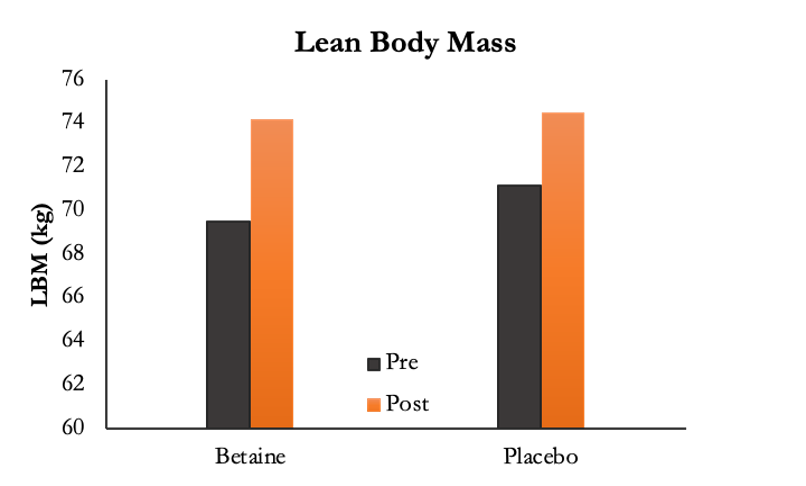
Next up is body composition. If we see an improvement in lean body mass (LBM) it would support the arm CSA data above. That’s exactly what happened too. There was a significant increase in LBM in the betaine group and not the placebo group (Figure 4).
Even better than just muscle growth, it appears that betaine may have had a recomposition effect since body fat percentage decreased slightly in the betaine group and actually increased in the placebo group. The absolute fat mass data support it, with an almost 3kg loss in fat mass in just 6 weeks. The evidence appears to be somewhat in favor of betaine so far. Keep in mind the methods used to measure muscle size and body fat percentage mentioned previously.
Figure 5. Body fat percentage pre and post-training.
Let’s think about why these changes might occur. The first place my mind went was nutrition. The participants taking betaine lost a lot of fat, and gained a lot of muscle in a short period. The authors mention they gave participants a 3-day diet log, but there is no data reported in the study, so we don’t know how the groups compare. That’s rather unfortunate.
It is also possible that these participants weren’t really representative of a trained population. The study reports 1RM values of 118kg (betaine) and 137kg (placebo) for bench press. They also had a 149kg (betaine) and 159kg (placebo) 1RM for squat. These were fairly strong participants and are what I would consider well trained. That helps us translate the data to the average lifter. Looking at changes, there were no differences in 1RM bench press at the end of the study, but there were differences in 1RM squat — favoring the placebo group. This data indicates betaine isn’t great for strength gains then.
Next, let’s look at training volume since we know that it is related to hypertrophy. The study reported volume by microcycle, which consisted of three (two-week) cycles. As you can see in table 2 from the manuscript, bench press volume increased more in the betaine group for microcycle 1, the placebo won out in the second microcycle, and they were about the same in the last microcycle. This helps explain why the 1RM bench press findings were not different, but doesn’t help explain the arm CSA mentioned earlier.
When we look at squat training volume, the placebo had a larger increase during the first microcycle, they were the same during the second microcycle, and the betaine group was higher during the final microcycle. I’m not sure we can take much from the training volume data here since the placebo group actually increased 1RM squat more. Since there were no differences in thigh CSA, it appears the betaine group did not have an advantage.
Another interesting finding is the trend for an improved vertical jump in the betaine group (p = .07), which makes sense because the betaine group lost more fat mass. They weighed less and could jump higher.
To summarize, the main benefits of betaine in this study were due to a recomposition effect of betaine. The betaine group gained more lean mass and lost more fat mass. Based on the arm CSA results, it seems like the majority of muscle was gained in the upper body. However, we need to be skeptical because of the methods used.
Author’s Answer
The major findings of the present study are that 6 weeks of betaine supplementation improved body composition, muscle size, work capacity, attenuated rise in HCTL, tended to improve power, but not strength in resistance-trained men.
My Answer
Betaine (pronounced BEET-a ene) is another name for tri-methyl glycine. It can be found in foods like spinach, beets, and wheat bread. Most betaine available on the market is produced as a byproduct extracted from molasses during sugar beet refinement.
A recent systematic review and meta-analysis found betaine significantly reduced the total body fat mass and percentage, but had no significant effects on body weight and BMI. Decreasing body fat and increasing lean mass may explain the unchanged body weight and BMI while using betaine. However, only two studies reported significant reductions in body fat and they were both published by Cholewa et al. One of them is the current study under review. The other one we’ll get into later.
If we look at one specific study using a high dose of betaine (6g/day) for 12 weeks, we see that obese participants on a diet (-500kcal/day) with no exercise had no benefit when they consumed betaine compared to a placebo. So if we couple these results with the positive effects from the current study, it tells us that betaine might need some type of stressor – like exercise – to have a beneficial effect on body composition. This implies that the mechanism behind betaine is helping the body adapt to stress in some way.
Another study gave untrained subjects a placebo, betaine (2g/day), creatine (20g/day), or creatine AND betaine. The authors found that betaine alone did not improve strength, body composition, or performance. They also reported that betaine supplementation does not augment muscle phosphocreatine content while creatine monohydrate does. This helps us compare the effects of betaine to a very well studied supplement (creatine). Betaine didn’t even come close. However, it was only a 10-day study so betaine might just need more time to show improvements in performance and body composition. There is also some evidence to suggest that betaine is important for creating creatine, so if you’re taking creatine you may not see all of the benefits of betaine.
In another study the effects of 2.5g betaine per day were measured on performance. Hoffman and colleagues reported no significant differences between betaine and placebo groups in repetitions to failure at 75% 1RM, or in the number of repetitions performed at 90% 1RM in the bench press. They also found no differences between groups in vertical jump power, bench press throw power, or in the Wingate anaerobic power test. Another notch against betaine for performance benefits.
A more recent study investigated the interaction between resistance training adaptation and chronic betaine supplementation in females. It was done by the same authors of the study under review (Cholewa et al.), with a different population (untrained females). The authors used much better methods and tools than the study in men, which included a bodpod for body composition and ultrasound for muscle size. The study was also longer (9 weeks). Ultimately, the authors found betaine decreased fat mass, but did not improve strength or lean mass. So, does that mean it only works in males? That could be one explanation, but I doubt it. Most ergogenic supplements work in both sexes to some extent. Again, I have some skepticism that it is useful as a supplement based on the current evidence.
As this article was about to go live another betaine study was published. This was in a group of Crossfit athletes, with an average of two years of training experience. The study gave either a placebo or betaine (2.5g/day) for six weeks. The authors found that “supplementation supported submaximal strength but did not enhance strength endurance nor body composition after 6 weeks of CrossFit© training in experienced athletes.” Given that betaine likely only improves body composition with a stress like exercise, it might be that it takes a certain type of exercise to see the benefits. Alternatively, it could be that with trained participants you need larger or longer studies because the benefits are so small.
What’s the rationale for betaine working?
Betaine regulates water in cells, so increased concentrations of betaine promote cell hydration and resistance to stress. The mechanisms of how betaine works could be by defending intracellular volume, and protecting enzymes in the Kreb’s cycle, which are challenged with exercise. Other potential mechanisms are related to methionine, and methyl donation. There is also some evidence it can enlarge muscle phosphocreatine stores and consequently improve muscle performance. Betaine may also allow for more efficient use of dietary protein through an increase in nitrogen retention. Overall, the mechanisms by which betaine affects strength and body composition are still not fully understood.
Betaine has been shown to reduce fat mass and increase muscle mass in animals. In fact, it has been used as a supplement in animal feed for more than 50 years. For example, one study shows betaine improves lean mass in pigs. On the other hand, in a different study with pigs, it improved some aspects of muscle quality, yet there was no difference in percentage lean, or lean:fat ratio with betaine, so the evidence is somewhat mixed. If we circle back to the idea of betaine showing an advantage if taken in combination with exercise, we might scratch our heads. Pigs don’t exercise much, even in a large pen.
What’s my interpretation?
This study is one of the first to use betaine in combination with resistance training. As you can see from this and other studies, the results are mixed. The strongest evidence suggests it can help with fat loss if used in combination with training, but even that benefit is small at best. There’s also some evidence it could help with increasing training volume, which could lead to more hypertrophy.
Overall, I’m skeptical of using betaine and would not encourage someone to take it based on the current evidence unless they have extra money to risk. You’ll often see it in pre-workouts, but most studies have participants consume betaine every day, so that’s what I would recommend if you are looking for benefits.
How can we apply this?
If you are going to take betaine I would recommend 2.5 – 3g per day. If you’re exercising try to take it within an hour of training.
What’s next?
One thing you may have noticed from some of the studies cited in my answer is the short length. I’d like to see something more long-term. At least 10-12 weeks. I think it would be good to see in combination with other supplements like in a pre-workout or compared against something like beta-alanine. I didn’t scour the pre-workout literature, so maybe I’ll cover one of those in a future post.

